Das ist wunderbar! We have landed in Germany on the International Cooking Tour too late to squeak in a little Oktoberfest fun so we will have to recreate it at home! Germany has been the cradle of European culture from music, literature, theatre and fine arts with the finest musicians and writers like Beethoven, Bach, Goethe, Heine and Schiller. Amazingly Germany does not celebrate any national festivals, and until recently, not even a national day. What it lacks in national festivals, it makes up for in regional festivals. Oktoberfest being the most well known and celebrated around the world!
The Day of German Unity is the national holiday in Germany, celebrated on October 3rd as a public holiday. It commemorates the anniversary of German Reunification in 1990. The Munich Oktoberfest originally took place during the 16 days up to, and including, the first Sunday in October. In 1994, the schedule was modified to extend to Oct 3rd making German Unity Day the last day of the festival.
Each city and state in Germany celebrates colorful festivals that date back hundreds of years. Many of the festivals have been revived to preserve the local heritage. So why is Oktoberfest, the most well known of all festivals, celebrated mostly in September? Somewhere back in the 15th century, the brewers in Bavaria had difficulty controlling the quality of their brews in the summer. Beers brewed roughly between early October and the end of March tended to taste clean and were more appealing. Bavarian brewers resorted to a simple but effective strategy to ensure a drinkable beer supply for the summer. They worked overtime in their brewhouses in late winter to make plenty of potent and well-hopped “March” beer, known as Märzen-Bier in German. Its color was deep amber to copper and its alcohol content somewhere between 5 and 6%. They stored beer casks in cool cellars and mountain caves and the high alcohol and hop content acted as preservatives. By early October, after the year’s grain harvest, the last of the Märzen beers had to be consumed so these precious casks could receive the new brewing season’s fresh beer. Makes sense that a large festival starting late in September was required to drink all the old beer and make way for the new beer in October. They found the perfect reason for a casual yet lively party and named it for the new beer season beginning in October!
Oktoberfest took on a whole new style with the celebration of the marriage between Bavarian Crown Prince Ludwig I and Princess Theresa von Sachsen-Hildburghasen of Saxony. The festivities began on October 12, 1810 and ended on October 17th with a horse race. The extravaganza marked the end of an informal beer drinking fest and the beginning of the elaborate festivity it is today.
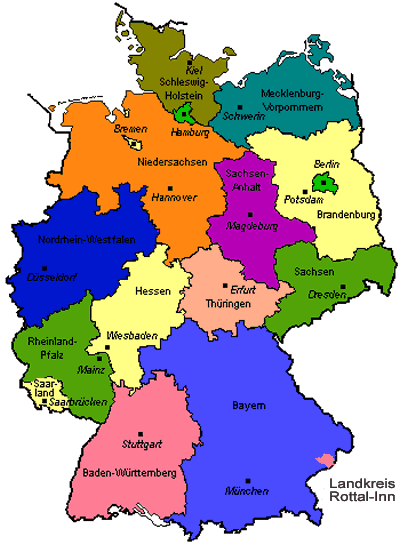
The cuisine most foreigners associate with German food is from the state of Bavaria (Bayern) and is the heartiest cuisine of the country. Pork remains the most popular meat and you will find it in classic dishes like Jagerschnitzel, grilled pork sausage topped with Swiss cheese and mushroom sauce, Schweinbraten, pork pot roast, and Bierbratl, pork roasted in beer. Bavarian flour dumplings called Knoedel and Spätzle an egg and flour noodle are typically served with meat or vegetables. Before the use of mechanical devices to make these noodles, they were shaped by hand or with a spoon and the results resembled spatzen (sparrows) thus spätzle means little sparrows. Today, in Europe spätzle are largely considered a “Swabian specialty” and are generally associated with the German state of Baden-Württemberg.
What would a traditional German meal be without sauerkraut? It is found throughout the country and prepared in different ways, used as both a side dish and a garnish. White Asparagus is a vegetable with cultural significance. It is the symbol of springtime with many local festivals dedicated to it. The official Asparagus season in Germany is known as Spargelzeit and marks the end of the cold, dark winter and the beginning of spring. Harvest begins mid April through June 24th, the Feast of St John the Baptist. There is great national pride for white asparagus in Germany. In fact, Spargelzeit is a country-wide phenomenon, much like apple-picking in the fall in the U.S. During Spargelzeit, Germans eat asparagus at least one a day and overall consume, on average, a total of 72,000 tons per year!

So beloved is the white asparagus that statues are made to honor the “royal vegetable” in Schwetzingen, a town in Baden-Württemberg, Germany, located near Mannheim and Heidelberg.
In Northern Germany, seafood replaces pork as the favorite protein because of the proximity to the North and Baltic Seas. Particularly popular are Rollmopse, rolled pickled Herring filets. Saurebraten is the most famous dish of the Rhineland, the region along the Rhine River, and has become one of Germany’s national dishes. Originally made from horse meat, it is more commonly made with beef today.
The Rhineland is also known for potato based dishes. Potato Pancakes are a traditional staple and go by many names, including Reibekuchen and Kartoffelpuffer and are oftentimes served with applesauce. Kartoffelsalat is potato salad typically served warm and Kartoffle mit Speck is small potatoes wrapped in bacon. Oh, yum!
Many German desserts have a rich and colorful history going back many centuries. Two of the most famous are Stollen and Lebkuchen. Stollen, best known from Dresden, is a bread like cake with dried citrus peel and fruit, nuts and spices and is usually eaten during the Christmas season. Lebkuchen, the most famous gingerbread, is from Nuremberg and 70 million are produced each year and enjoyed around the globe.
Since I’ve never met a potato I didn’t love, we going to jump back to the Rhineland and make some Kartoffelsalat. As with American potato salad, every Mom has her version, German potato salad is no different. Some put bacon in it and some don’t. Hey, if it has bacon and potatoes in it, it’s now “legal” for breakfast, right!
German Potato Salad – mit Speck ( with Bacon)
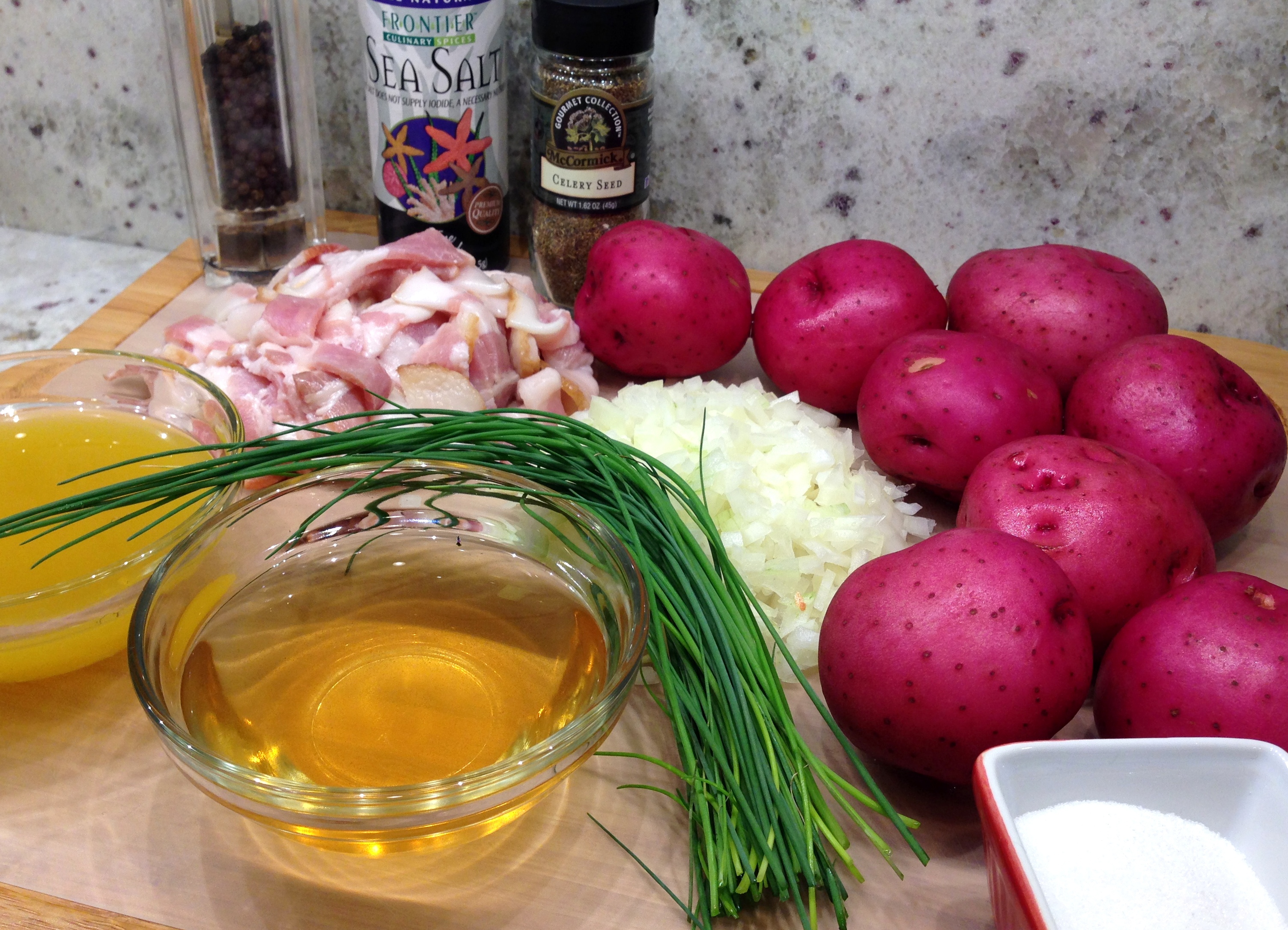
Looks like the start of a tasty potato salad! I grew up on Mom’s wonderful mayonnaise based potato salad and loved it! I never thought I’d like any other kind but I was very happily surprised! Take this one to your next picnic and don’t give another thought to the mayonnaise.
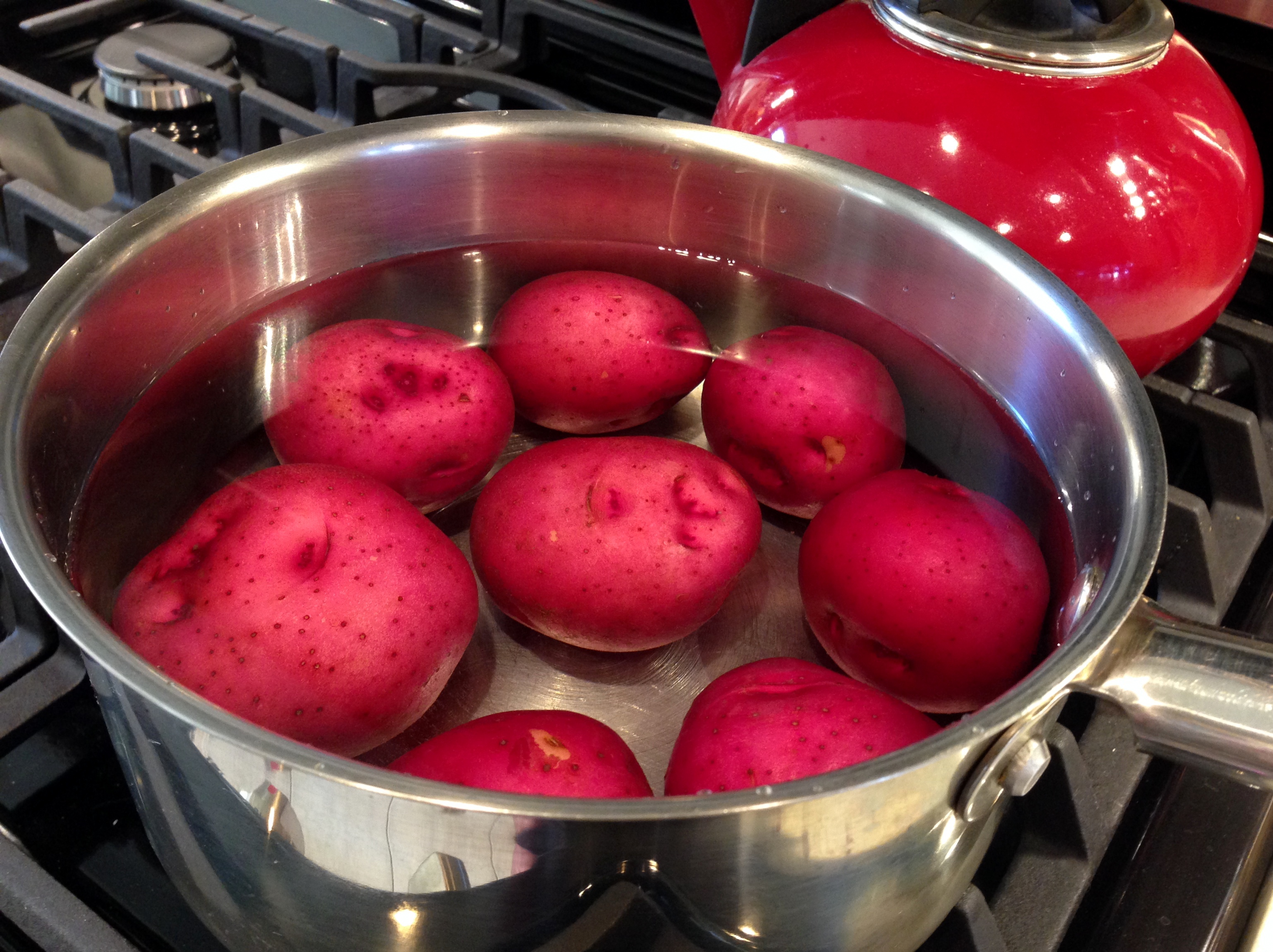
Place the potatoes in a pot, with enough water to cover. Bring to a boil, and then cook for about 10 minutes, or until easily pierced with a fork. Drain and set aside to cool.
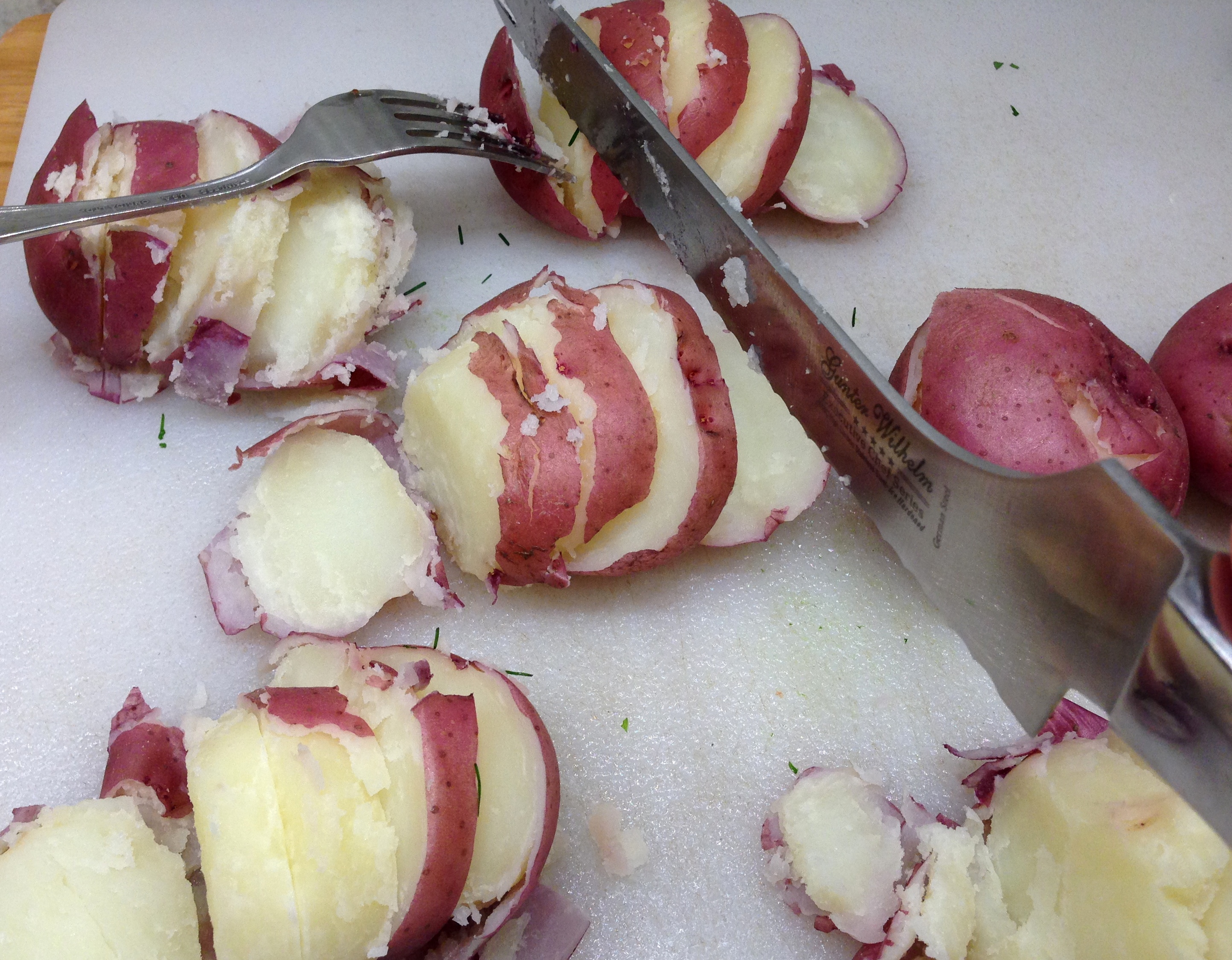
When potatoes are cool enough to hold, sliced in 1/8-1/4 inch rounds with a serrated knife.
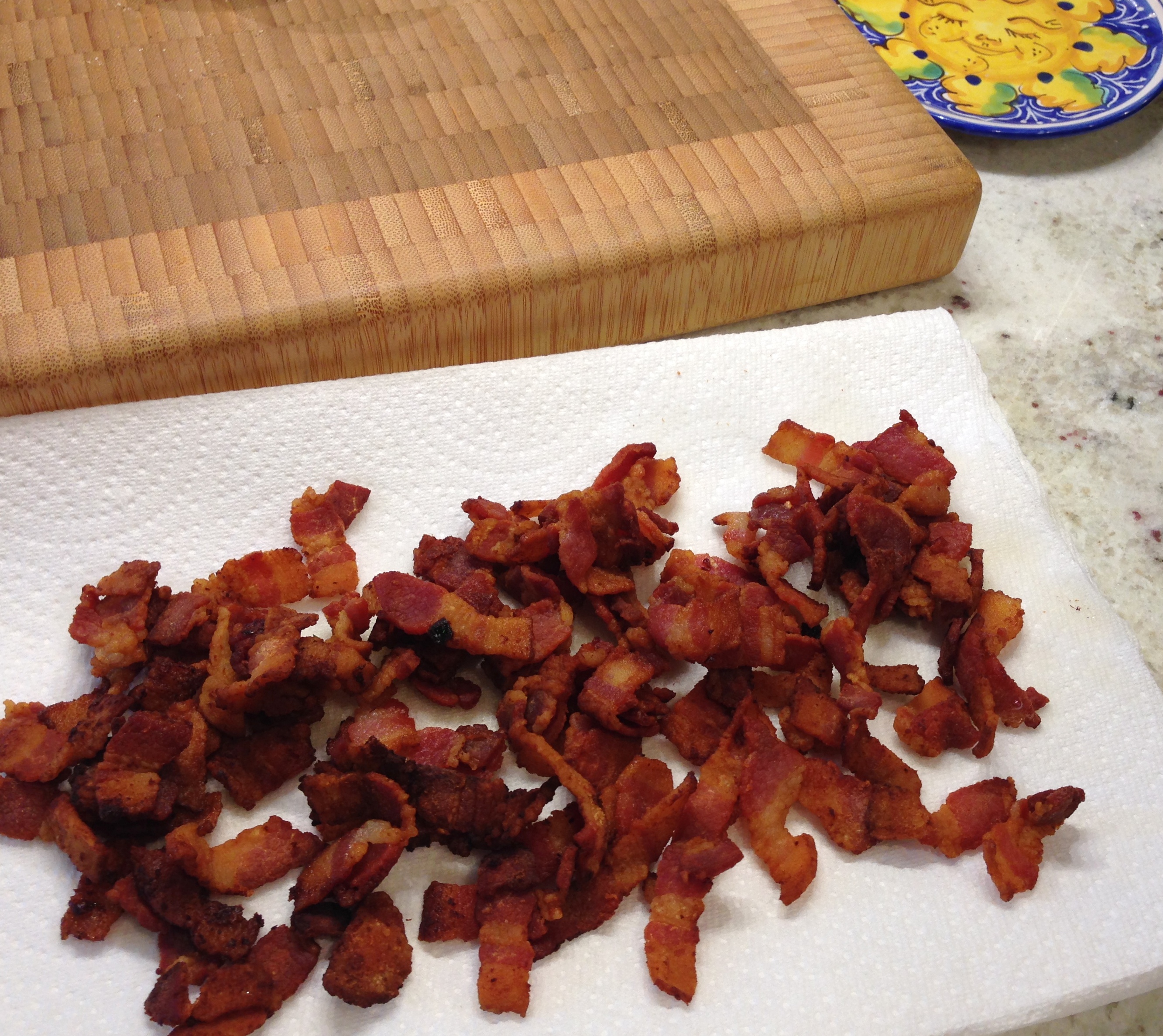
Fry bacon in a large skillet until crisp. Remove bacon from the pan, drain on paper towels and crumble.
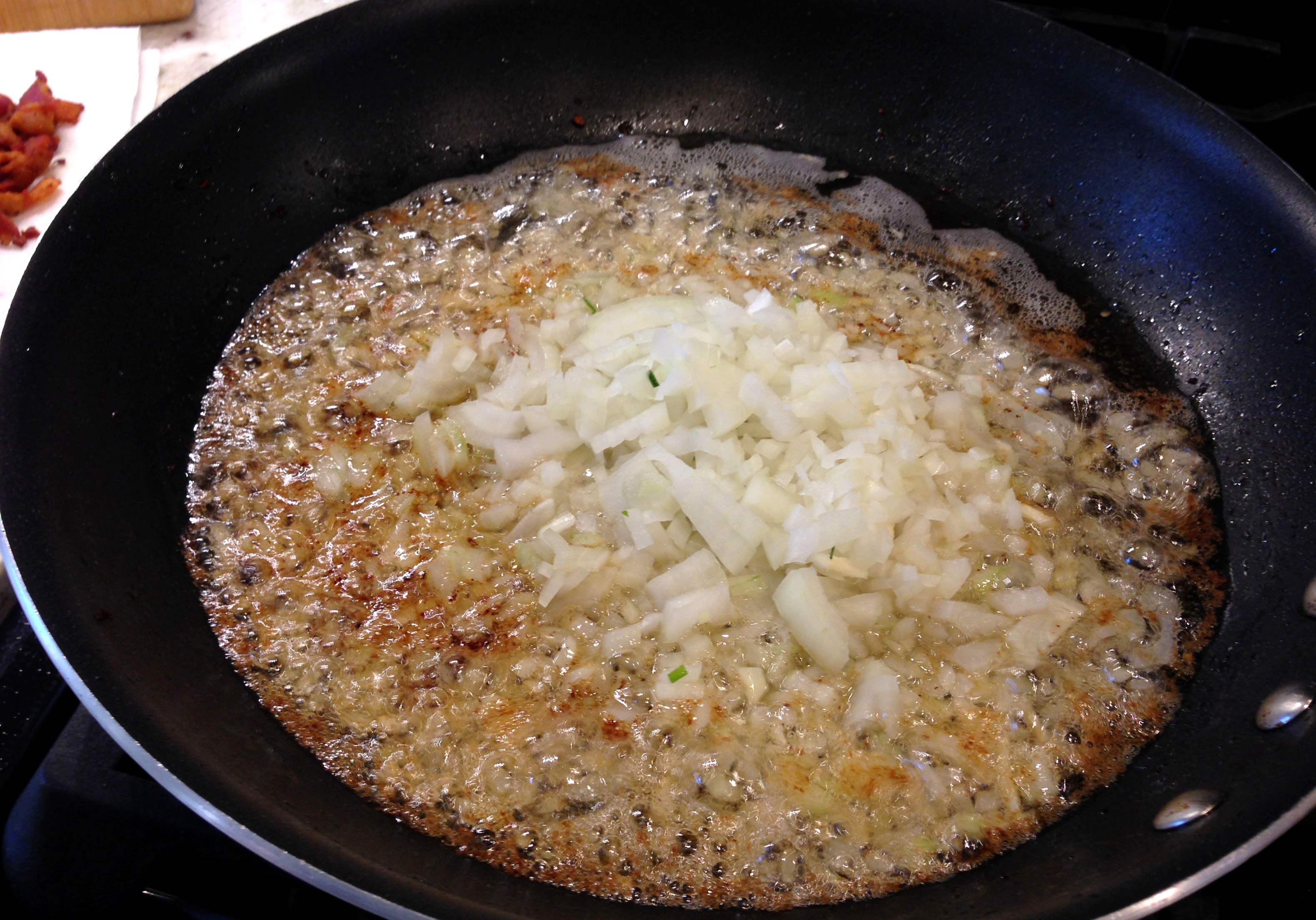
Add onion to the bacon fat left in the pan and cook until very soft.
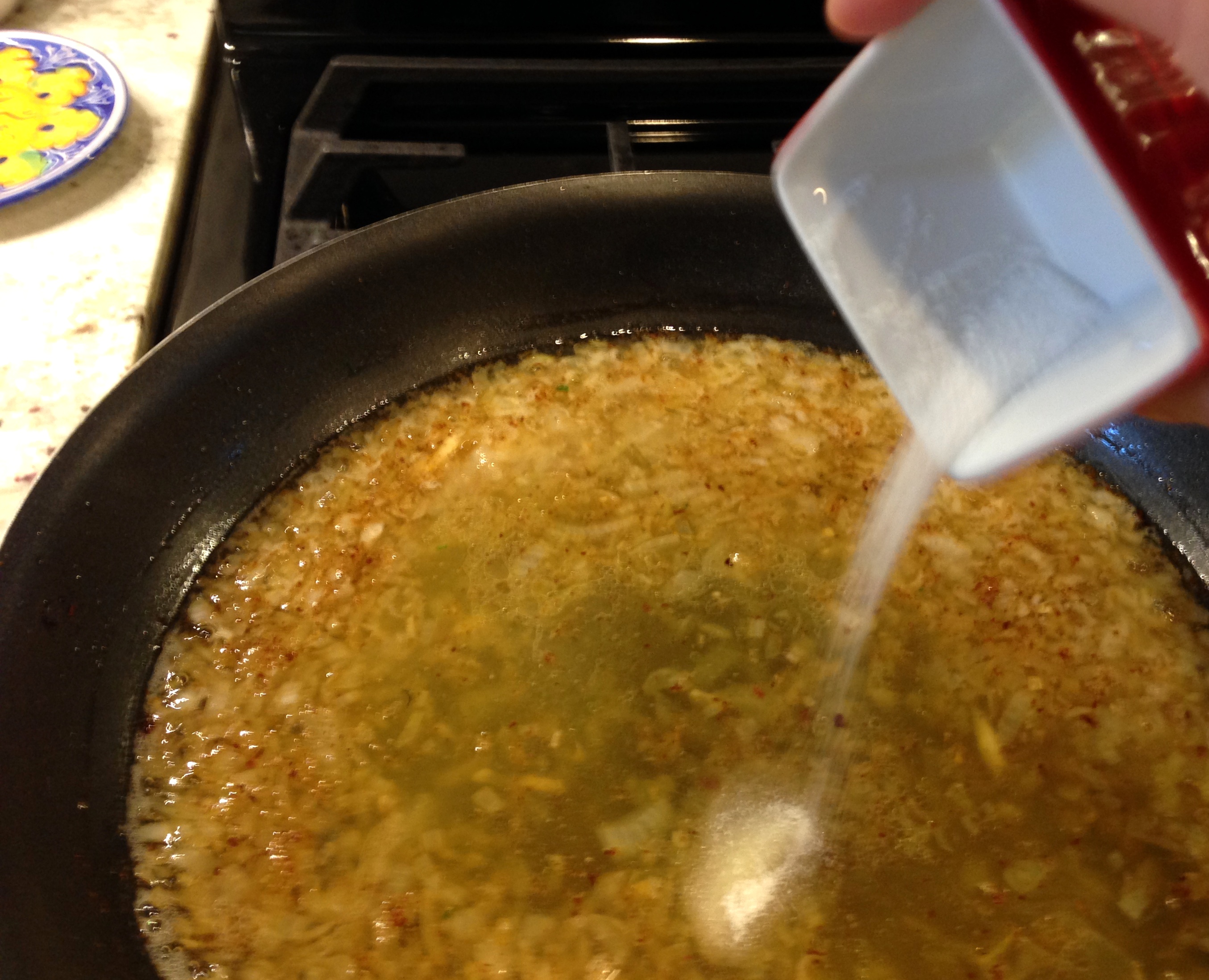
Stir in vinegar, broth, sugar, salt, pepper and celery seeds. Bring to a full simmer to dissolve the sugar and thicken slightly.
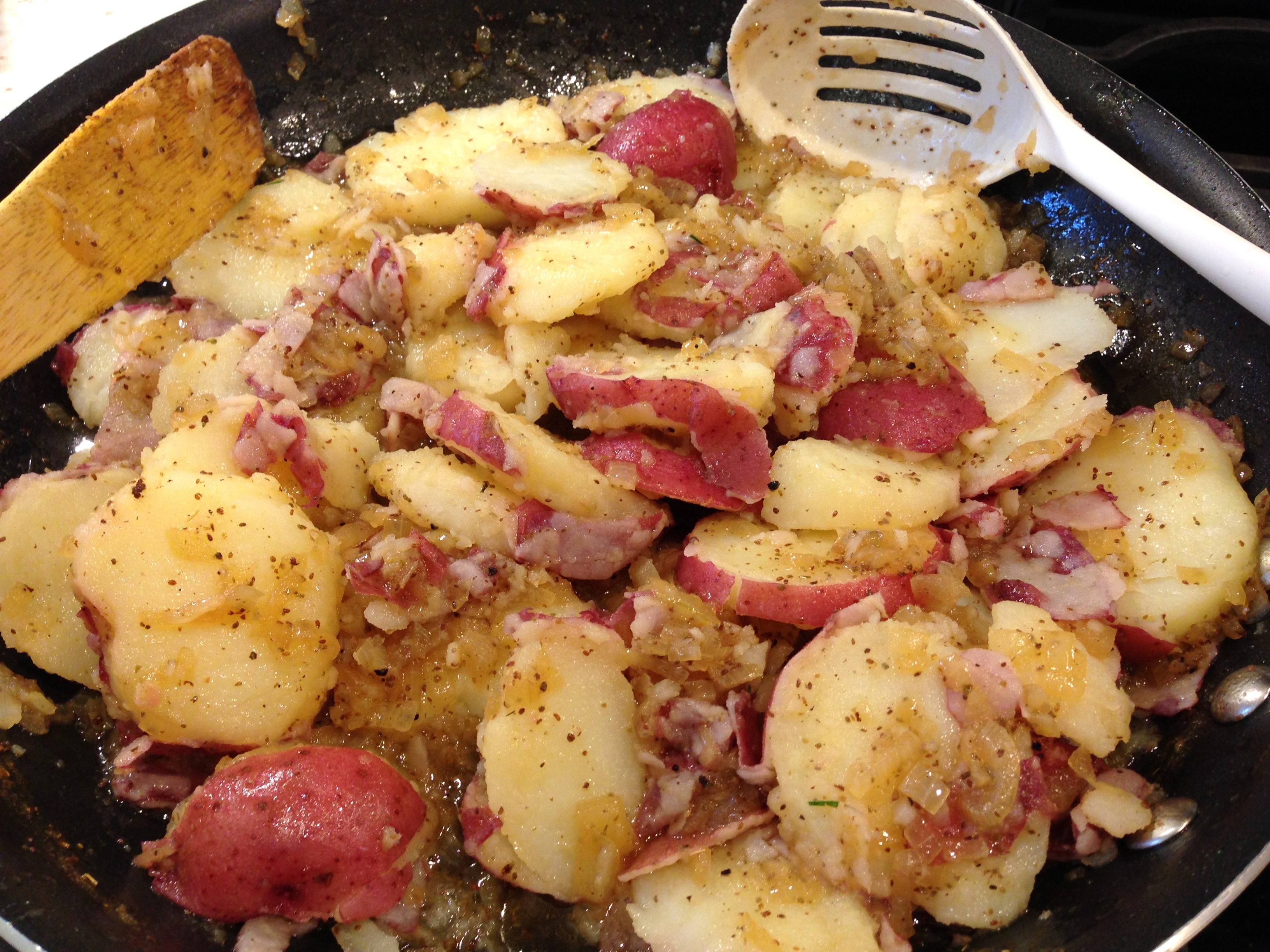
Add the potato slices and gently toss to coat with dressing.
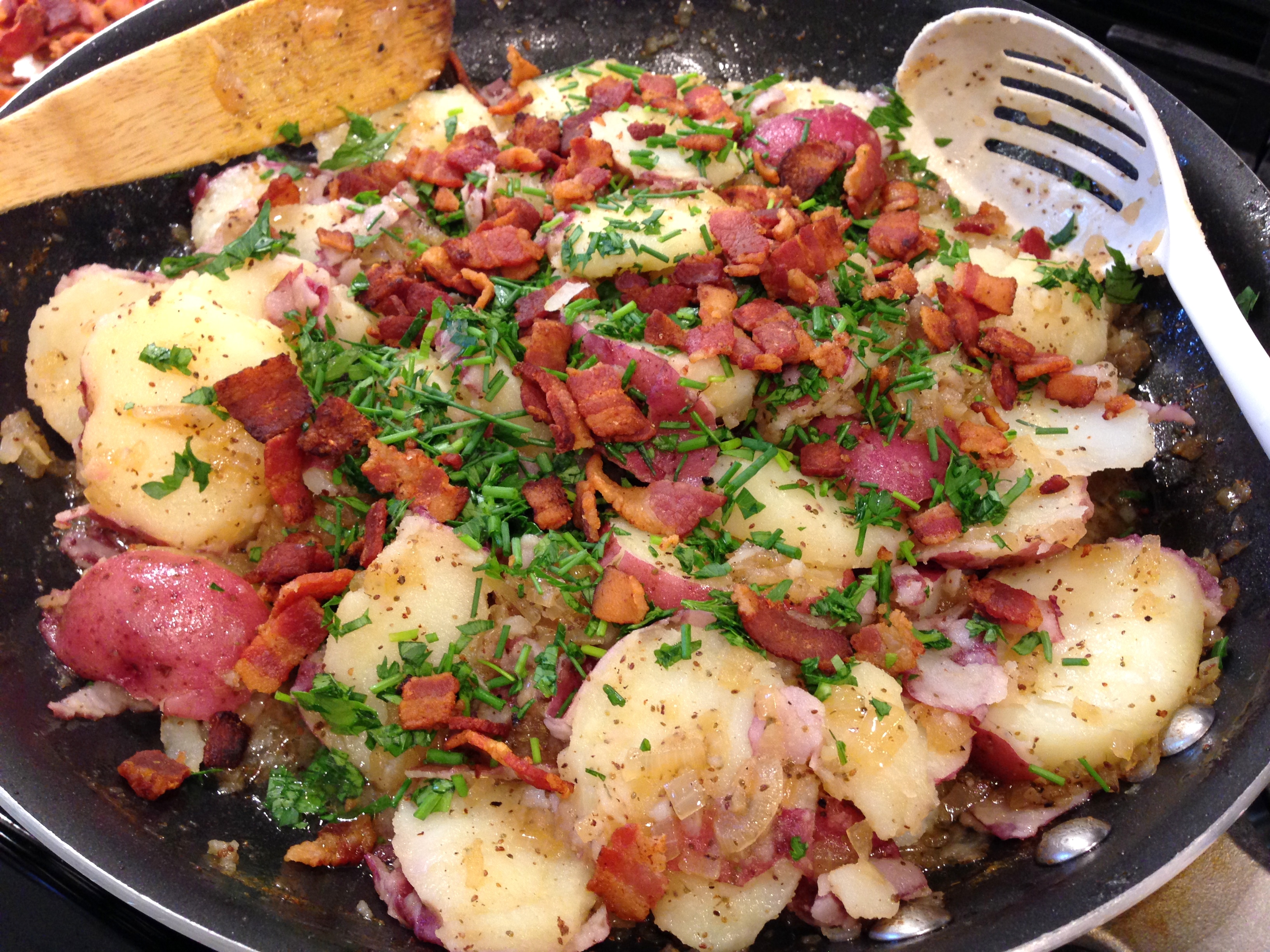
Add the parsley and 3/4 of the crumbled bacon and 3/4 chives. Mix carefully to prevent too much mashing of the potatoes. A little mushing is fine and adds to the creamy dressing feel of the salad. Taste for seasoning adjustments.
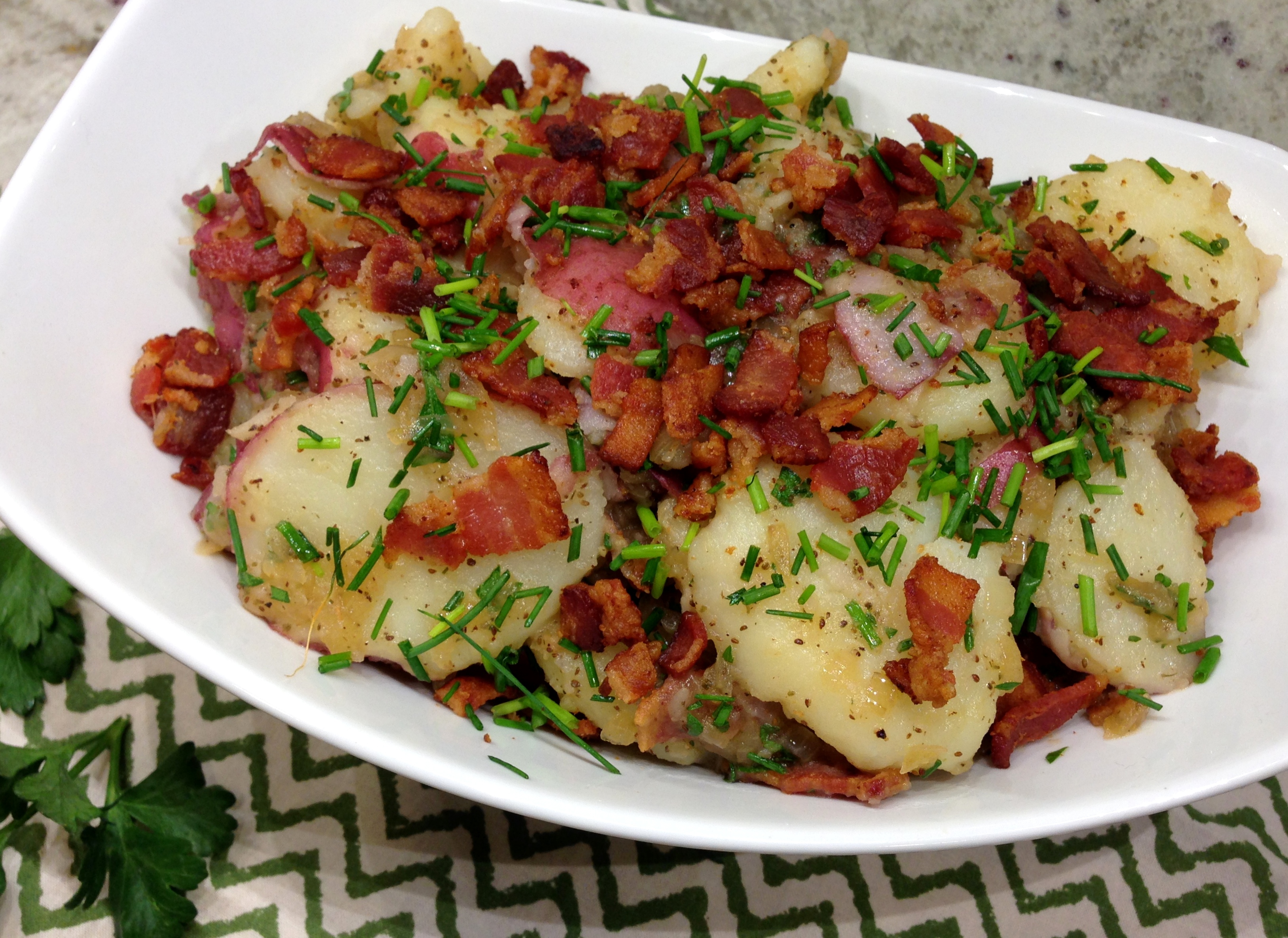
Heat through and transfer to a serving dish. Crumble the remaining bacon and chives over the top and serve warm. The combination of sweet and salty, smokey and crunchy, set against the creamy potatoes is so good!
Tip: If you refrigerate the potato salad, take it out one hour before serving to bring it back up to room temperature. You can also heat briefly in the microwave to get it warm, NOT hot. Garnish with bacon and chives before serving.
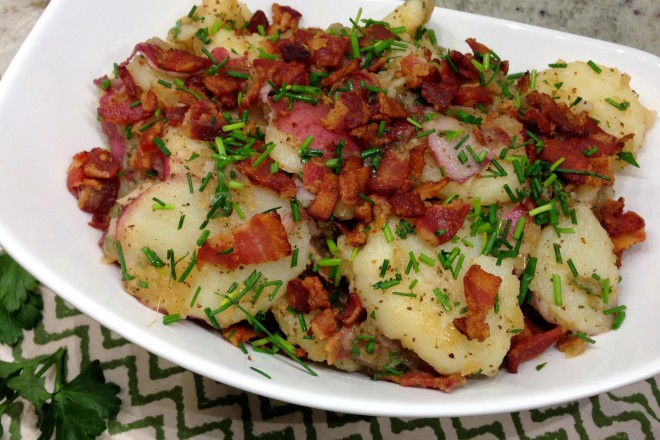

- 8 small red potatoes, peels left on
- 6 slices bacon, cut into lardons, crumbled and divided
- 1 small onion, diced
- 1/2 cup cider vinegar
- 1/2 cup rich chicken or beef broth
- 3 tablespoons sugar
- 1 teaspoon salt
- 1/4 teaspoon pepper
- 1 tablespoon parsley
- 2 teaspoons celery seeds
- 1/4 cup fresh chives, finely chopped, divided
- Place the potatoes in a pot, with enough water to cover. Bring to a boil, and cook for about 10 minutes, or until easily pierced with a fork. Drain and set aside to cool. When cool enough to hold, sliced in 1/8-1/4 inch rounds with a serrated knife.
- Fry bacon in a large skillet until crisp. Remove bacon from the pan, drain on paper towels and crumble.
- Add onion to the bacon fat left in the pan and cook until very soft.
- Stir in vinegar, broth, sugar, salt, pepper and celery seeds. Bring to a full simmer to dissolve the sugar and thicken slightly. Add the potato slices and gently toss to coat with dressing.
- Add the parsley and 3/4 of the crumbled bacon and 3/4 chives. Mix carefully to prevent too much mashing of the potatoes. Taste for seasoning adjustment.
- Heat through and transfer to a serving dish. Crumble the remaining bacon and chives over the top and serve warm.
- If you refrigerate the potato salad, take it out one hour before serving to bring it back up to room temperature. You can also heat briefly in the microwave to get it warm, NOT hot. Garnish with bacon and chives before serving.





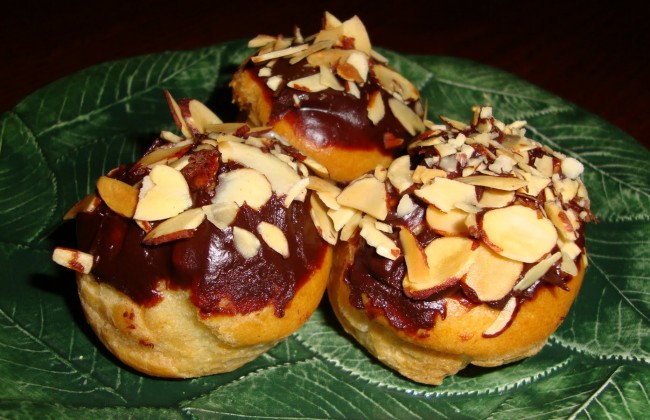



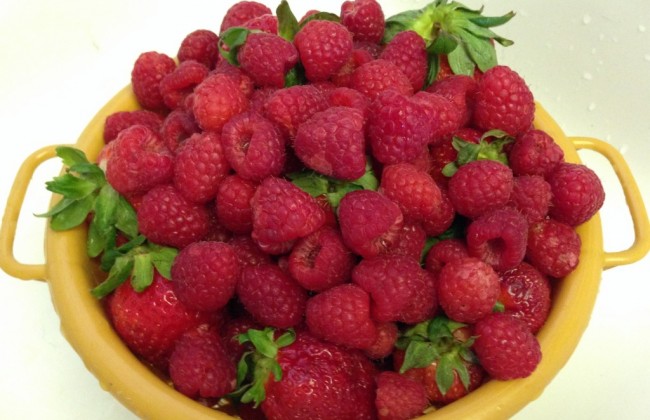



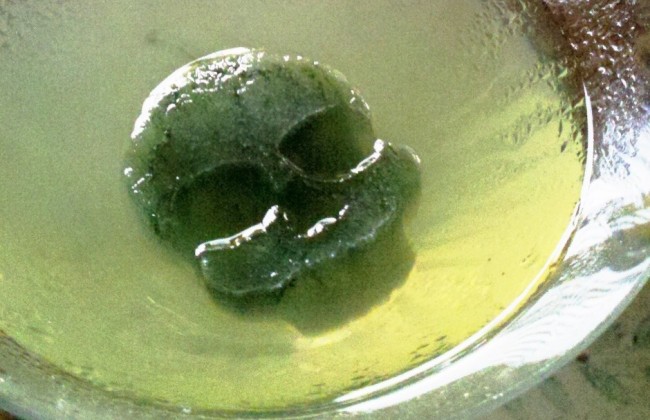

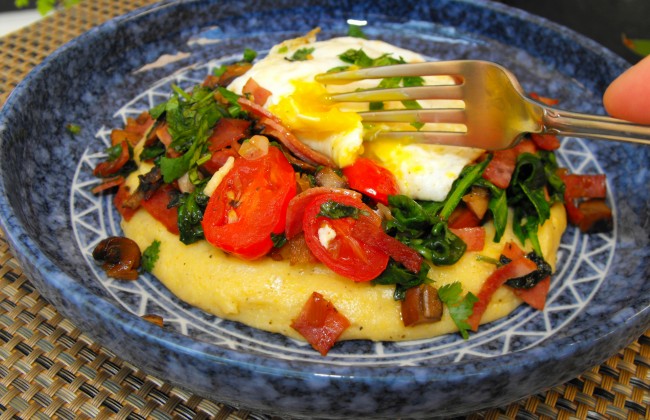



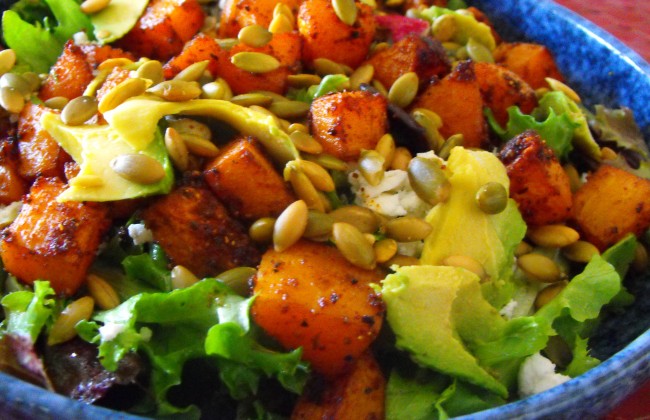


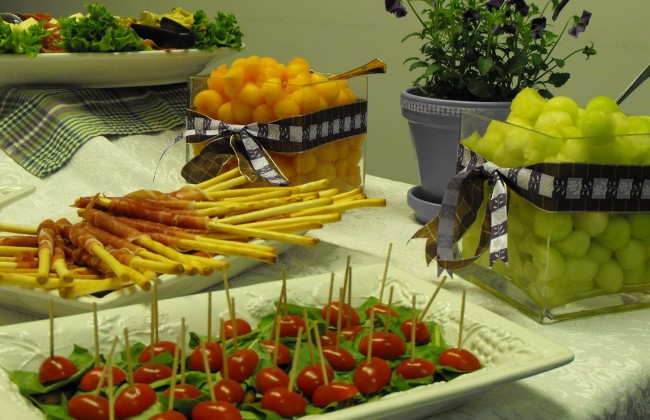
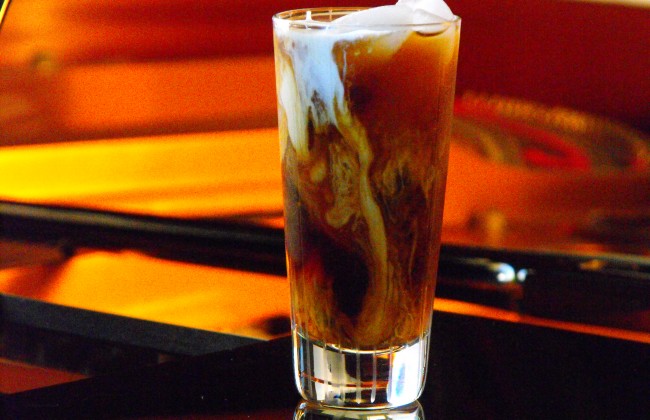


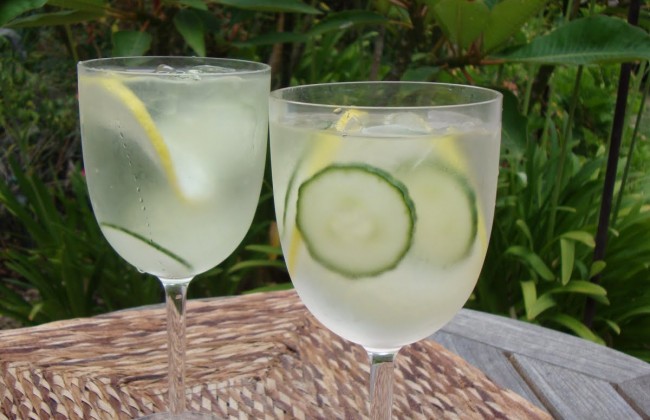


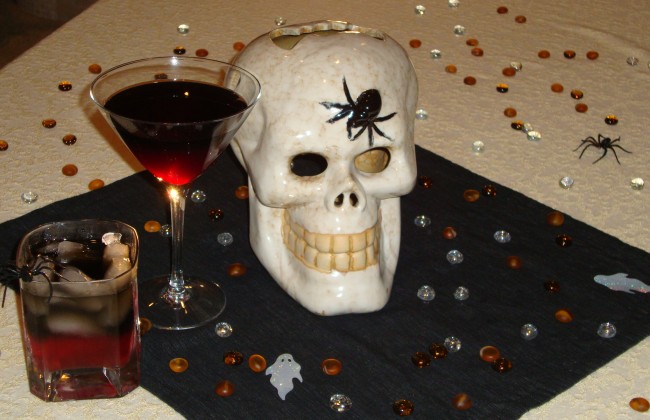

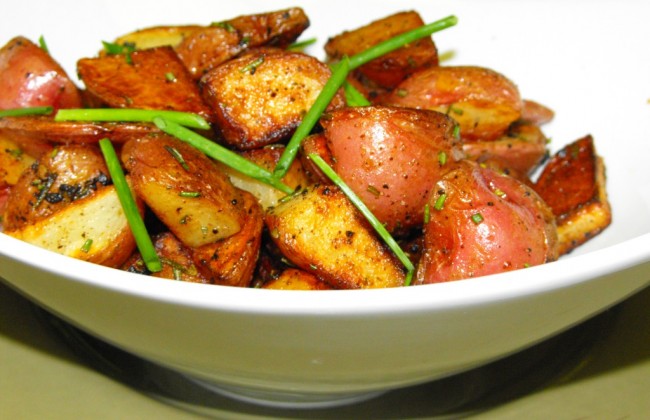




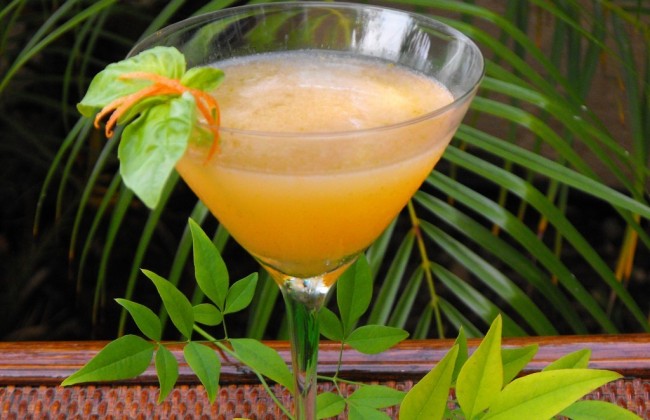
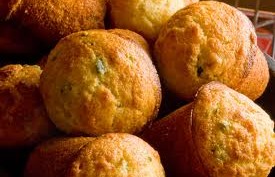
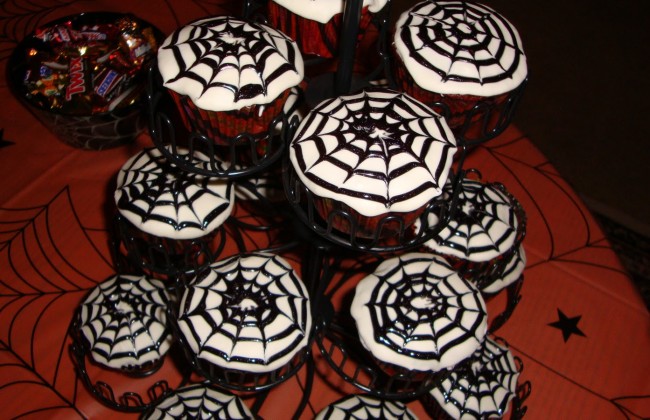

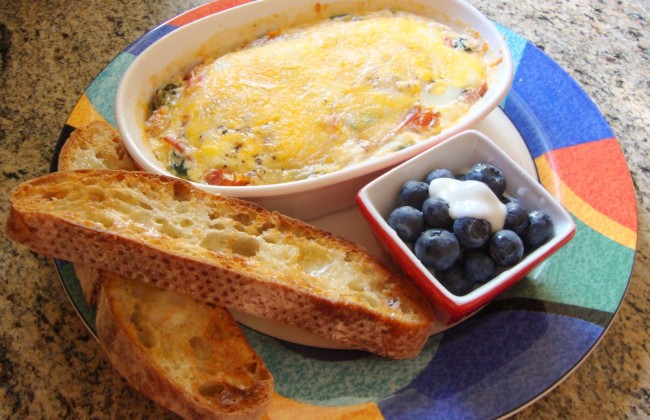
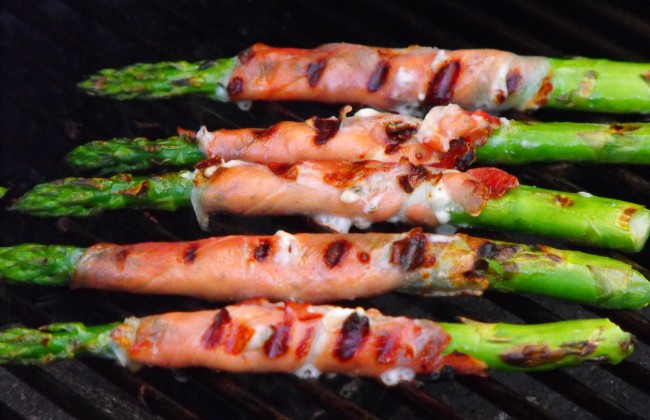

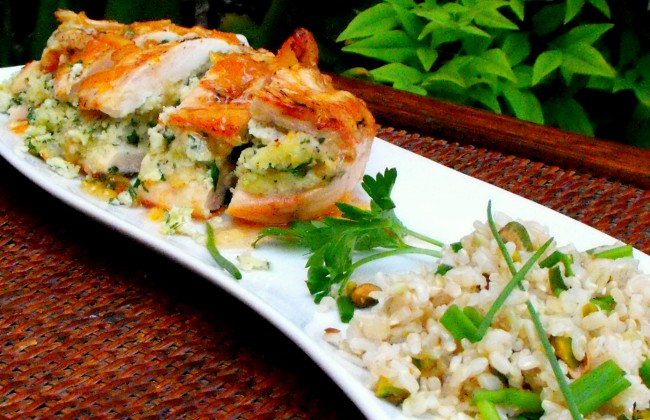



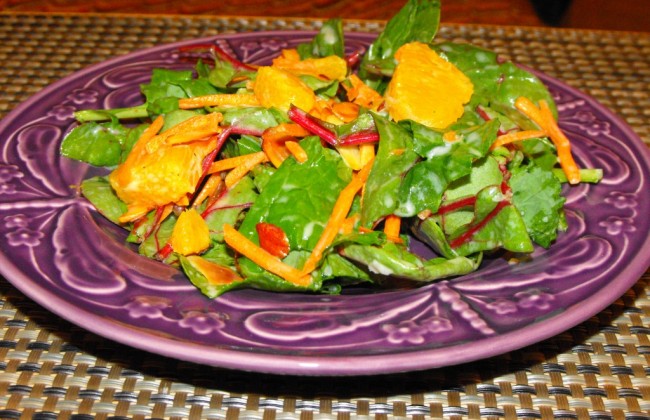
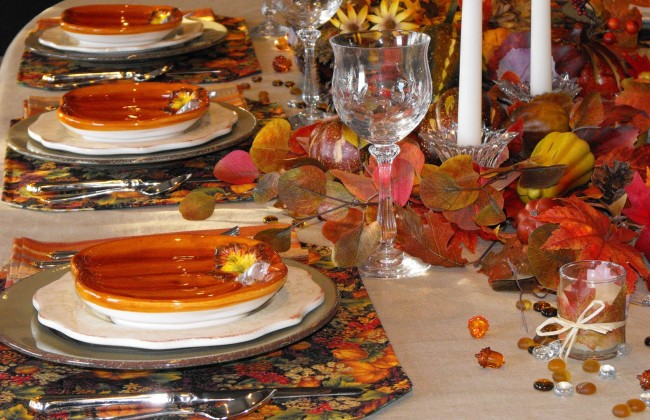



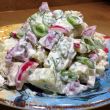
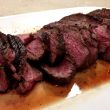


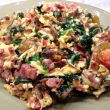


I lived and went to school in Germany for 5 years. I never had potato salad this good when I was there. Sorry Mom. But this recipe is incredibly good! The bacon definitely kicks it up a notch or two. I’m used to mayonnaise style potato salad too. The tartness of the vinegar and bacon flavors in this version compliment each other and if you don’t make extra portions you may regret it!